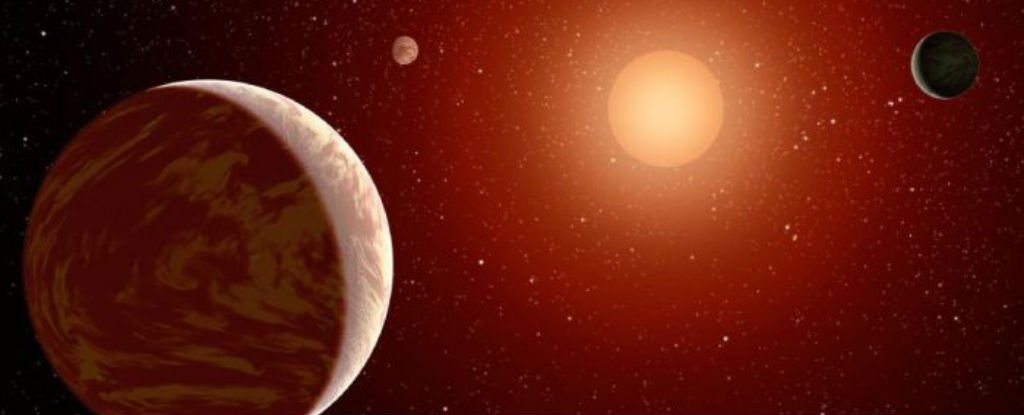
The closest potentially habitable planet ever found has been spotted by Australian scientists, and it’s just 14 light-years away. That’s 126 trillion kilometres from Earth, which sounds impossibly far, but when you consider that our closest planetary neighbour, Mars, is 249 million km away, that handful of light-years doesn’t seem so bad in the scheme of things.
Named Wolf 1061c, the newly discovered planet is located in the constellation Ophiucus, and its star is the 35th closest star from Earth – that we know about. The team behind the discovery says it’s orbiting a red dwarf ‘M-type’ star called Wolf 1061, alongside two other planets. All three are suspected to be rocky like Mars, rather than gaseous like Neptune.
“It is a particularly exciting find because all three planets are of low enough mass to be potentially rocky and have a solid surface,” said lead researcher Duncan Wright, an astronomer at the University of New South Wales (UNSW). “The middle planet, Wolf 1061c, sits within the ‘Goldilocks zone’ where it might be possible for liquid water – and maybe even life – to exist.”
Of the three planets, the one orbiting closest to Wolf 1061 would be far too hot for life, and the furthest away one is very likely too cold. But the one in the middle, Wolf 1061c, looks to be just right for life… potentially.
Not that that means Wolf 1061c is anything like Earth. It has a mass around 4.3 times that of our planet, and orbits its star every 18 days at a distance of around 10 percent Earth’s orbit of the Sun. In our Solar System, that would make Wolf 1061c far too hot for life, but the Wolf 1061 star is much cooler than our Sun, with surface temperatures of around 3,300 Kelvin. The surface of our Sun, on the other hand, regularly hits 5,800 Kelvin.
“This discovery is especially exciting because the star is extremely calm,” Wright told Stuart Gary at ABC News. “Most red dwarfs are very active, giving out X-ray bursts and super flares, which spells doom for any life, given the habitable zone is so close into these stars.”
More on science alert